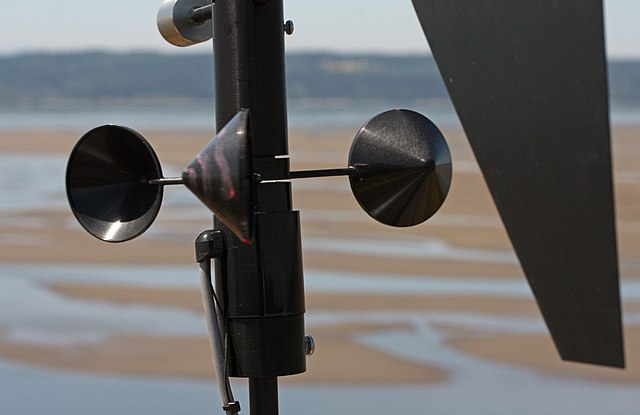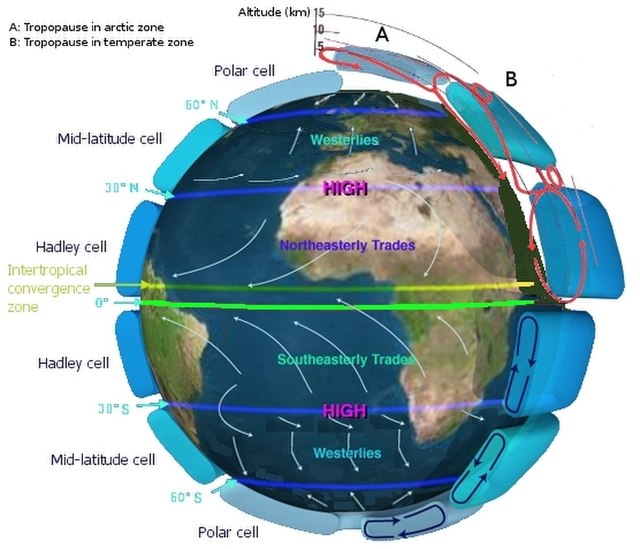Wind direction is generally reported by the direction from which the wind originates. For example, a north or northerly wind blows from the north to the south; the exceptions are onshore winds and offshore winds. Wind direction is usually reported in cardinal direction, or in degrees. Consequently, a wind blowing from the north has a wind direction referred to as 0° (360°); a wind blowing from the east has a wind direction referred to as 90°, etc.
This wind vane indicates an east wind.
Wind is the natural movement of air or other gases relative to a planet's surface. Winds occur on a range of scales, from thunderstorm flows lasting tens of minutes, to local breezes generated by heating of land surfaces and lasting a few hours, to global winds resulting from the difference in absorption of solar energy between the climate zones on Earth. The two main causes of large-scale atmospheric circulation are the differential heating between the equator and the poles, and the rotation of the planet. Within the tropics and subtropics, thermal low circulations over terrain and high plateaus can drive monsoon circulations. In coastal areas the sea breeze/land breeze cycle can define local winds; in areas that have variable terrain, mountain and valley breezes can prevail.
Cup-type anemometer on a remote meteorological station
An occluded mesocyclone tornado (Oklahoma, May 1999)
Winds are part of Earth's atmospheric circulation
RAF Exeter airfield on 20 May 1944, showing the layout of the runways that allow aircraft to take off and land into the wind





